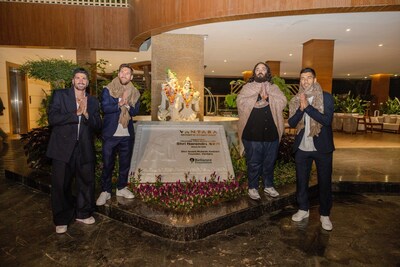Landmark Project Across Four Governorates to Boost Power Plant Output by 50%, Easing Chronic Electricity Shortages
SHANGHAI, Dec. 19, 2025 /PRNewswire/ — Shanghai Electric has broken ground on the Euphrates Combined Cycle Expansion Project in Iraq. As the project’s contractor, Shanghai Electric is upgrading power plants across four Iraqi governorates by transforming simple-cycle units into combined-cycle systems. The expansion will add a total capacity of 625 megawatts (MW) and is designed to boost overall plant efficiency by approximately 50%, generating an additional 5 billion kilowatt-hprojours (kWh) of electricity annually without increasing fuel consumption. This initiative is poised to significantly alleviate the country’s persistent electricity shortages.
“The pressing need for energy security and development in Iraq is clear. We are honored that our efficient combined-cycle technology is recognized as instrumental in modernizing this critical infrastructure,” said a spokesperson for Shanghai Electric. “This project exemplifies our commitment to supporting the energy security and green development of Belt and Road countries through technological innovation.”
Iraq, a major Middle Eastern oil producer, has faced severe power shortages for over three decades. Most of its power plants rely on natural gas, yet domestic gas development lags, creating a heavy dependence on imports. This power deficit has become a persistent challenge to people’s livelihoods and a bottleneck for national reconstruction and economic growth.
The Shanghai Electric-contracted expansion project along the Euphrates River broke ground early this year and covers the Iraqi governorates of Najaf, Karbala, Babylon, and Al-Qadisiyyah, with all upgrades centered on advanced combined-cycle technology. Core equipment has now arrived on site, and construction is advancing through the collaboration of Chinese and Iraqi teams. Since its commencement, the project has drawn considerable attention from the Iraqi government and public.
Iraqi Minister of Electricity Ziad Ali Fadel has praised the project’s strategic importance, stating, “This initiative is highly significant for improving Iraq’s power supply and optimizing its electricity infrastructure. Once operational, it will effectively reduce Iraq’s reliance on imported natural gas and lower its fuel costs for power generation.”
At the power plant in Najaf, the upgrade utilizes high-temperature exhaust from existing gas turbines as a heat source. The exhaust is directed through heat recovery steam generators to produce high-pressure steam, which then drives a new steam turbine to create additional electricity. This combined-cycle process increases output and efficiency without extra fuel and reduces the thermal pollution from the original units.
Naseem Ayad, the Iraqi project manager at the Najaf site, said, “Chinese equipment and power technology help us reuse high-temperature exhaust, boosting generation capacity while reducing thermal pollution. This project sets a benchmark for power plant upgrades in Iraq and reflects local hopes for more reliable electricity and better living conditions.”
At the Karbala site, core equipment such as heat recovery steam generators and direct air-cooled condensers have been delivered. This project phase marks one of Iraq’s first combined-cycle expansions to fully utilize Chinese equipment and standards, with core systems designed and manufactured in China. This will effectively drive the overseas deployment of Chinese equipment and enhance the recognition of Chinese standards in Iraq.
Upon completion, the project is expected to improve local livelihoods, support post-war reconstruction, and lay a robust energy foundation for Iraq’s industrial recovery and economic growth.
Shanghai Electric remains dedicated to supporting sustainable development in Belt and Road regions and worldwide through advanced, efficient, and eco-friendly energy technologies.
For more information, please visit https://www.shanghai-electric.com/group_en/.
![]() View original content to download multimedia:https://www.prnewswire.com/news-releases/shanghai-electric-powers-up-iraqs-energy-future-with-major-625mw-efficiency-upgrade-302647425.html
View original content to download multimedia:https://www.prnewswire.com/news-releases/shanghai-electric-powers-up-iraqs-energy-future-with-major-625mw-efficiency-upgrade-302647425.html
SOURCE Shanghai Electric












